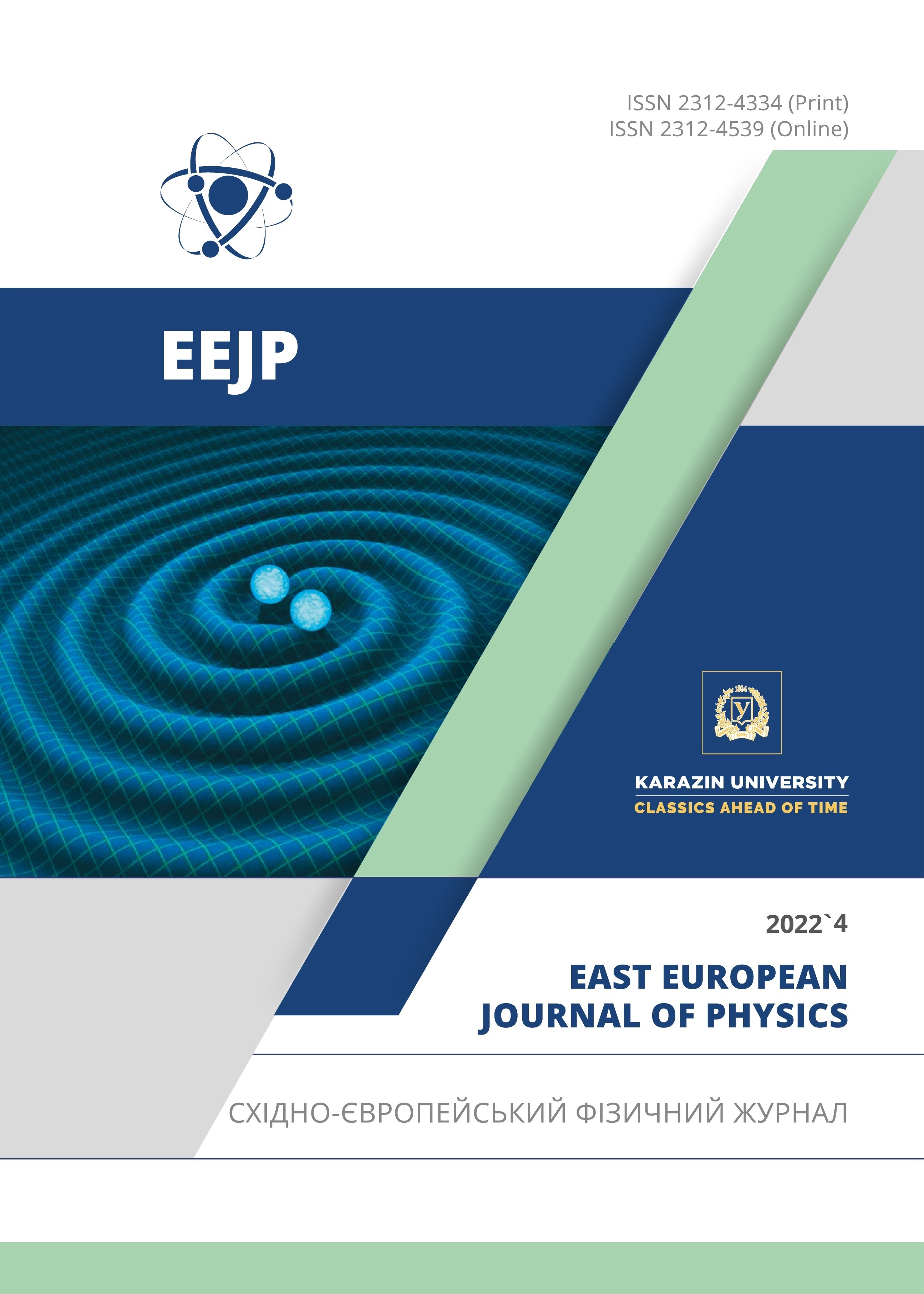Utilizing Spectroscopy and Optical Microscopy to Characterize Titanium Dioxide Thin Films
Abstract
This paper presents the surface electronic structure and morphological characteristics of the nano-crystalline titanium dioxide (nc TiO2) films derived from the two different sol-gels. Using Scanning tunneling microscopy/spectroscopy (STM/S), it was found that the particles of nc-TiO2 produced from batch A have a surface band gap of ~3.3 eV while the particles of nc-TiO2 produced from batch B have a surface band gap of ~2.6 eV. On other hand, the small particles have aggregated together to form larger particles ranging from ~120 nm to 150 nm in size and distributed randomly over the surface of the batch A nc-TiO2 films. For batch B nc-TiO2films, the small particles have formed larger particles but with their size ranging from 200 nm to 225 nm. That is ascribed to differences between sol-gels used to prepare nc-TiO2 films. As a result of that, the electric power of batch A nc-TiO2/P3HT solar cells is enhanced by more than 8 times in comparison with batch B solar cells.
Downloads
References
C. Leyens, and M. Peters, Titanium and Titanium Alloys: Fundamental and Application, (Wiley, VCH, 2003).
M. Kralova, M. Vesely, and P. Dzik, “Physical and chemical properties of titanium dioxide printed layers”, Catal. 161(1), 97 (2011). https://doi.org/10.1016/j.cattod.2010.11.019
H. Al-Dmour, RH. Alzard, H. Alblooshi, K. Alhosani, S. AlMadhoob, and N. Saleh, “Enhanced Energy Conversion of Z907-Based Solar Cells by Cucurbituril Macrocycles”, Font.Chem. 561, 1 (2019). https://doi.org/10.3389/fchem.2019.00561
Y. Liang, and H. Ding, “Mineral-TiO2 composites:Preparation and application in papermaking, paints and plastics”, J. Alloys Compd. 844, 156139 (2020). https://doi.org/10.1016/j.jallcom.2020.156139
A. Fujishima, and K. Honda, “Electrochemical Photolysis of Water at a Semiconductor Electrode”, Nature, 238, 37 (1972). https://doi.org/10.1038/238037a0
K. Gopinath, N. Madhav, A. Krishnan, R. Malolan, and G. Rangarajan, “Present applications of titanium dioxide for the photocatalytic removal of pollutants from water: A review”, J. Environ. Manage. 270, 110906 (2020) https://doi.org/10.1016/j.jenvman.2020.110906
B. O’Regan, and M. Grätzel, Nature, 353, 373 (1991). https://doi.org/10.1038/353737a0
I. Hao, J, Yan, S. Guan, L, Cheng, Q. Zhao, Z. Zhu, Y. Wang, Y. Lu, and J. Liu, “Oxygen vacancies in TiO2/SnO coatings prepared by ball milling followed by calcination and their influence on the photocatalytic activity”, Appl. Surf. Sci. 466, 490 (2019). https://doi.org/10.1016/j.apsusc.2018.10.071
H. Al Dmour, D.M. Taylor, and J.A. Cambridge, “Effect of nanocrystalline-TiO2 morphology on the performance of polymer heterojunction solar cells”, J. Phys. D, 40(17), 5034 (2007). https://doi.org/10.1088/0022-3727/40/17/004
F. Petronella, A. Pagliarulo, A. Truppi, M. Lettieri, M. Masieri, A. Calia, and R. Comparelli, “TiO2 Nanocrystal Based Coatings for the Protection of Architectural Stone: The Effect of Solvents in the Spray-Coating Application for a Self-Cleaning Surfaces”, Coating. 8(10), 356 (2018). https://doi.org/10.3390/coatings8100356
A. Thomas, and K. Syres, “Adsorption of organic molecules on rutile TiO2 and anatase TiO2 single crystal surfaces”, Chem. Soc. Rev. 41, 4207 (2012). https://doi.org/10.1039/c2cs35057b
NT-MDT Spectrum Instruments, Proezd 4922, 4/3 Zelenograd, Moscow 124460, Russia, http://www.ntmdt.com
C. Dette, O. Pérez, C. Kley, P. Punke, E. Patrick, P. Jacobson, F. Giustino, et al, “TiO2 Anatase with a Bandgap in the Visible Region”, Nano Lett. 14(11), 6533 (2014). https://doi.org/10.1021/nl503131s
A.A. Abd El-Moula, M. Raaif, and F.M. El-Hossary, “Optical Properties of Nanocrystalline/Amorphous TiO2 Thin Film Deposited by rf Plasma Magnetron Sputtering”, Acta Phys. Pol. A, 137, 1068 (2020). https://doi.org/10.12693/APhysPolA.137.1068
H. Al Dmour, and D.M. Taylor, “Revisiting the origin of open circuit voltage in nanocrystalline-TiO 2/polymer heterojunction solar cells”, Appl. Phys. Lett. 94, 223309 (2009). https://doi.org/10.1063/1.3153122
M. Wu, J. Wu, C. Yen, H. Lo, F. Lin, and F. Su, “Correlation between nanoscale surface potential and power conversion efficiency of P3HT/TiO2 nanorod bulk heterojunction photovoltaic devices”, Nanoscale, 2(28), 1448 (2010). https://doi.org/10.1039/b9nr00385a
H. Al Dmour, “A Capacitance response of solar cells based on amorphous Titanium dioxide (A-TiO2) semiconducting heterojunctions”, AIMS Mater. Sci. 8(2), 261 (2021). https://doi.org/10.3934/matersci.2021017
W.J.E. Beek, M.M. Wienke, M. Kemerink, X. Yang, and R.A.J. Janssen, “Hybrid Zinc Oxide Conjugated Polymer Bulk Heterojunction Solar Cells”, J. Phys. Chem. B, 109, 9505 (2005). https://doi.org/10.1021/jp050745x
Copyright (c) 2022 Hmoud Al Dmour

This work is licensed under a Creative Commons Attribution 4.0 International License.
Authors who publish with this journal agree to the following terms:
- Authors retain copyright and grant the journal right of first publication with the work simultaneously licensed under a Creative Commons Attribution License that allows others to share the work with an acknowledgment of the work's authorship and initial publication in this journal.
- Authors are able to enter into separate, additional contractual arrangements for the non-exclusive distribution of the journal's published version of the work (e.g., post it to an institutional repository or publish it in a book), with an acknowledgment of its initial publication in this journal.
- Authors are permitted and encouraged to post their work online (e.g., in institutional repositories or on their website) prior to and during the submission process, as it can lead to productive exchanges, as well as earlier and greater citation of published work (See The Effect of Open Access).








